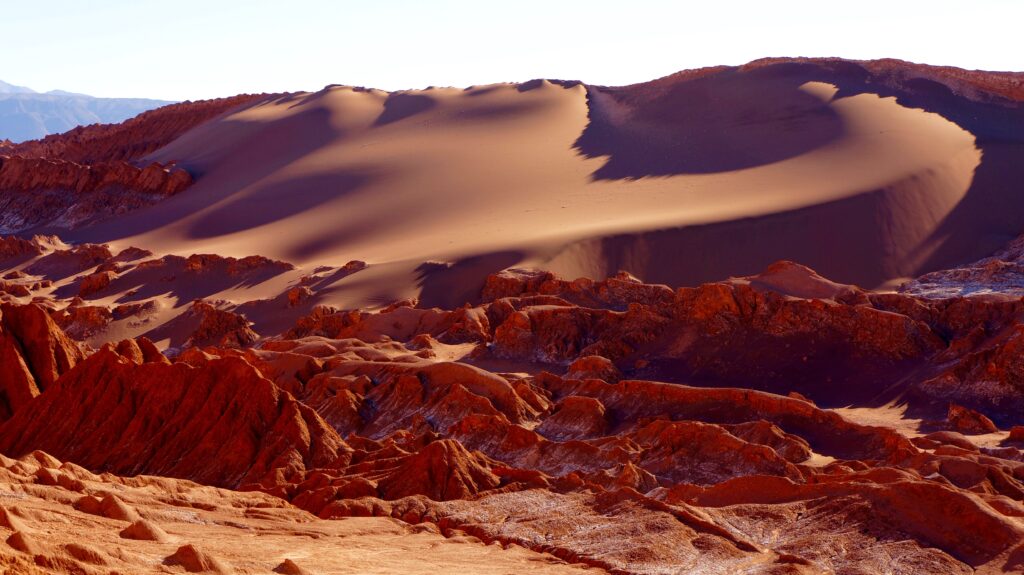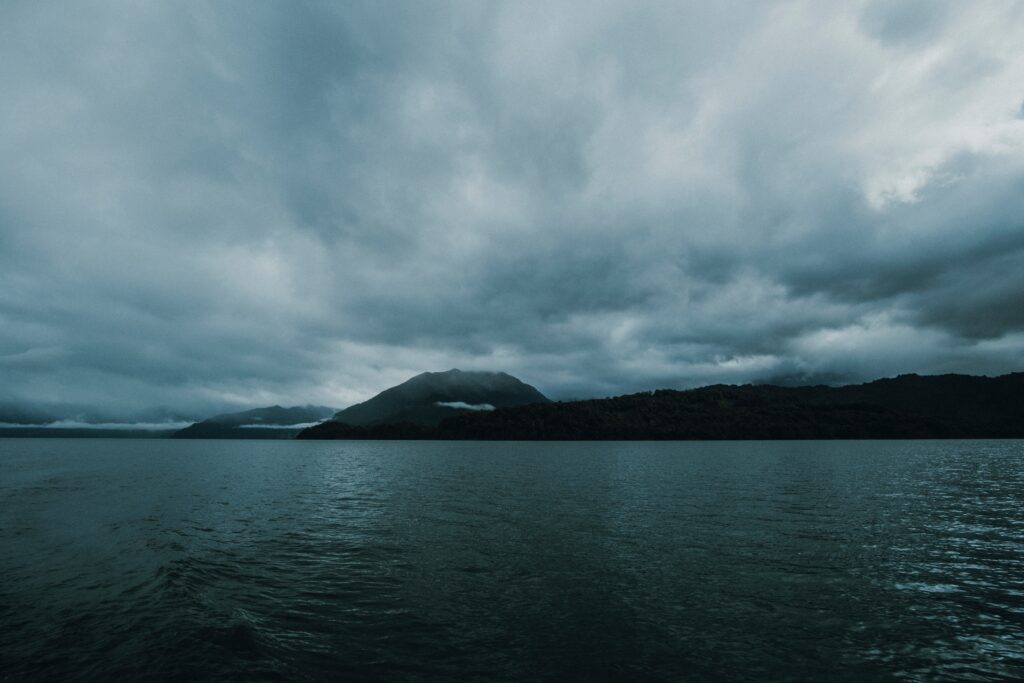You may have heard that the Atacama Desert in Chile is the world’s driest place. It is one of the most amazing places on earth. it is located on the west side of the Andes. The Andes block out the moist air from southeast trade winds, which condense on the other side of the mountains and fall in the Atacama. As a result, the Atacama Desert in Chile remains drier than any other place on Earth.
World’s driest desert
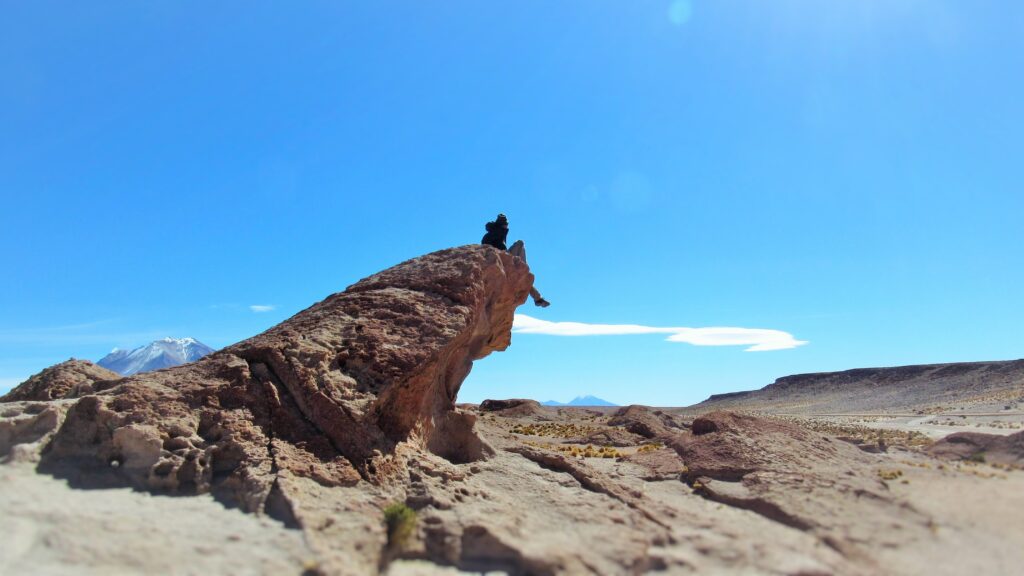
The Atacama Desert in Chile is located on the Pacific fringe of South America. It is one of the world’s driest places, with annual rainfall ranging from 0.6 to 2.1 millimeters. The sparse vegetation and lack of rain contribute to a life that demonstrates the desert’s extreme aridity. In this region of the world, five snow-capped volcanoes are the highest points, and only powerful southern fronts can break through the subsidence region to drop rain.
This desert is also home to 66 telescopes, including some used by international science organizations. It is also home to fascinating animal life, unique geology, and the clearest night sky in the world. There are many more reasons to visit the Atacama Desert in Chile. If you are looking for a unique vacation, consider visiting the desert in the winter. It offers the perfect environment for an astronomical expedition.
The Atacama Desert in Chile covers approximately 40,000 square miles and straddles the southern border of Peru. It stretches for 600 miles from north to south and spills into Bolivia, Peru, and Argentina. The Atacama Desert lies between the Andes Mountains and the Cordillera de la Costa mountain range. It has an average elevation of approximately 13,000 feet.
The Atacama Desert in Chile receives almost no precipitation at all. It receives less than 0.6 inches of rain each year, making it the world’s driest desert. The dry air is the result of the Pacific Anticyclone that blows dry air over the Atacama. The Humboldt Current, which carries cold water up the western coast of South America, also cools the air above it. Cold air cannot hold water vapor, so it dries the land.
It is a testing ground for Mars and lunar rovers
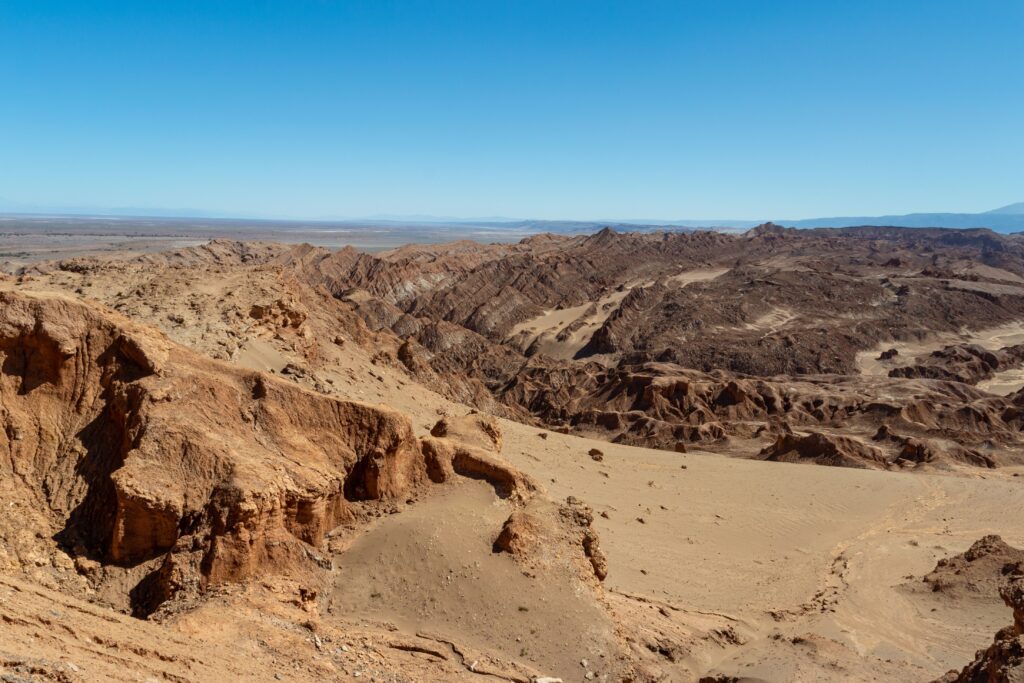
The Atacama Desert in Chile has become a crucial testing ground for a new generation of spacecraft, including the Exmore’s rover. The rover is the first of a pair of robotic explorers that will look for signs of life on Mars in 2021. This is the closest Earth-like environment to Mars, and the ESA hopes that the Atacama Desert will help them develop a more robust rover for the Red Planet.
A robotic explorer has found life in the Atacama Desert, which is thought to be a close analogy to the arid surface of Mars. The autonomous robot, Zoe, is being tested to see how well its life detection system works in the Atacama Desert in Chile. Zoe found colonies of bacteria and lichens – not very surprising for a desert with the least organic material in the world.
The Atacama Desert in Chile is similar to Mars – it received less than an inch of rain annually and is as close to Mars as we get on Earth. Mars Rover will be able to perform a variety of tasks, including roving, drilling, and life detection. It is the world’s driest desert and home to some of the hardest-to-live microbes. Atacama’s rocky landscape provides engineers with the best conditions to test vehicles in a variety of environments, including boulders, dunes, and arid deserts. Using robotic drills, it will be possible to take samples and analyze them from the depths of the planet.
NASA funded a robotic drill that will reach deep beneath the surface of the Atacama Desert and collect samples of soil. Researchers used the drill to collect sediment samples down to 80 centimeters. They compared samples from the Atacama Desert to samples taken by hand. They found a common microbial species in the rover samples and confirmed that the rover was successful in recovering the sediment. The researchers believe this is a step toward modern-day life on Mars.
It is a shining star
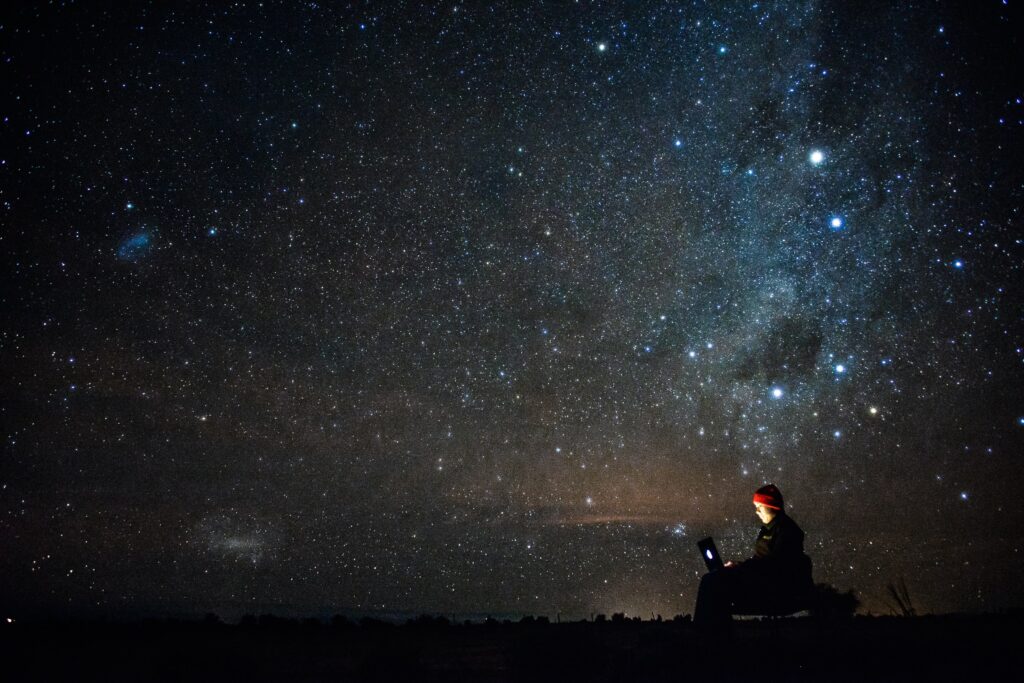
The Atacama Desert in Chile is an enduringly fascinating place. As the country’s first tourist attraction, it’s the site of the world’s oldest saltpeter mines. The former Chilean dictator, Augusto Pinochet, turned the saltpeter mines into concentration camps. The Atacama Desert was home to murder, torture, and mass graves. But its awe-inspiring natural beauty has reshaped the landscape.
This rocky, arid land is reminiscent of the Sahara, but its dunes are a far cry from the dunes of the Sahara. The Atacama Desert in Chile is rockier, meaner, and drier. But it retains a strange beauty that appeals to the senses. Evaporation on the desert’s surfaces is saltwater vapor, which has evaporated from the air and is covered in a snow-like dusting.
The Atacama Desert in Chile is the most spectacular place in the world for stargazing. It has an arid atmosphere and its high altitude keeps the sky free from light pollution. The pitch-black diamond-studded display is simply breathtaking. Astronomers guide visitors with a laser pen to help them see more. The stars are so close that you can distinguish the red and blue hues of Mars, the rings of Saturn, and the moon’s craters.
The Atacama Desert in Chile has been the subject of a booming “Astro-tourism” industry in the past decade. Astro-photographers and stargazers from around the globe flock to the region to explore its unusual atmospheric conditions. With these unique characteristics, the Atacama Desert has become one of the world’s premier stargazing destinations. You can enjoy the beauty of the night sky with the help of astronomy apps or star charts.
It has abandoned mining towns

It has abandoned mining towns in the Atacama Desert in Chile. During the late nineteenth century, Chile was home to vast deposits of saltpeter, which was used in fertilizers and explosives. One of the most important towns in the area, Humberstone, was founded in 1872 and employed over three thousand people. The town was eventually abandoned in the 1960s and allowed to fall into ruin for decades. In 2005, UNESCO recognized Humberstone as a World Heritage Site.
The Atacama Desert in Chile is full of minerals, including copper, nitrate, zinc, and lithium. Mining companies began establishing towns in the desert as a way to extract these materials. The nitrate industry was a major contributor to Chile’s economy but was soon crippled when Germany discovered the benefits of artificial nitrate. After the discovery of synthetic nitrate, many of these mining towns fell into a state of decay.
The Atacama Desert in Chile has abandoned towns located throughout northern Chile. Humberstone, located 45 km east of Iquique, is a UNESCO World Heritage Site. Here, you can visit the impressive Teatro Humberstone, built with Douglas fir and cast iron. There are still several buildings, including an enormous swimming pool, which has since been rusted out and waterless.
The Atacama Desert in Chile has one of the driest places on Earth. Yungay town is located near an abandoned mining town. The higher Andes screen out rain from Parana and Amazon. The town is one of the driest parts of the Atacama desert and has been attracting the attention of astrobiologists. It has been discovered that this arid environment can support microorganisms, which is a major source of scientific research.
It has snow-dusted peaks

The Atacama Desert in Chile is a surprisingly dry and starkly beautiful landscape. This desert rarely receives more than three millimeters of precipitation per year. The average is only 50 mm, or two inches. But when snow does fall, it quickly dries up and disappears. The desert then returns to its usual sandy state. While you’re there, don’t miss a chance to explore the moon valley, one of the most unique geological formations in the world.
The Atacama Desert in Chile is so dry that it’s been compared to Mars, and is often used in the film as a backdrop for Martian scenes. While few animals or plants are living here, some of the desert’s hardy plants have survived the extreme conditions. Some of them get their water from marine fog. Snowfall in the Atacama Desert can disrupt the dry conditions of the region, giving visitors an amazingly unusual view.
The Atacama Desert in Chile is not particularly cold, though. The area is cooled by the Humboldt Current, which draws cold water from the bottom of the ocean. This cool air then flows inland. This helps maintain a relatively mild climate. Annual average temperatures have a maximum of 65 degrees, while minimum dips are as low as 32. In Summer maximums can get up to 76 degrees while minimums are around 40 degrees. In contrast in the Atacama desert in Chile in winter temperatures range between 30 to 70 degrees.
Conclusion
The Atacama Desert’s high altitude and lack of light pollution make it one of the world’s most remote places, and it’s an ideal place to observe the night sky. Despite its remote location and high altitude, it’s also home to more than one million people. Despite its stark appearance, the Atacama Desert in Chile has a lot to offer. There is something incredibly special about this region of Chile.

